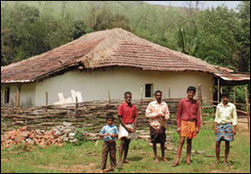Order of the National Green Tribunal regarding illegal felling of trees within the Badapari Demarcated Protected Forest (DPF), Khordha district, Odisha, 15/05/2025
<p>Order of the National Green Tribunal (Eastern Zone Bench, Kolkata) in the matter of Giri Gobardhan Forest Committee Vs State of Odisha & Others dated 15/05/2025.</p> <p>The Applicant Giri Gobardhan

